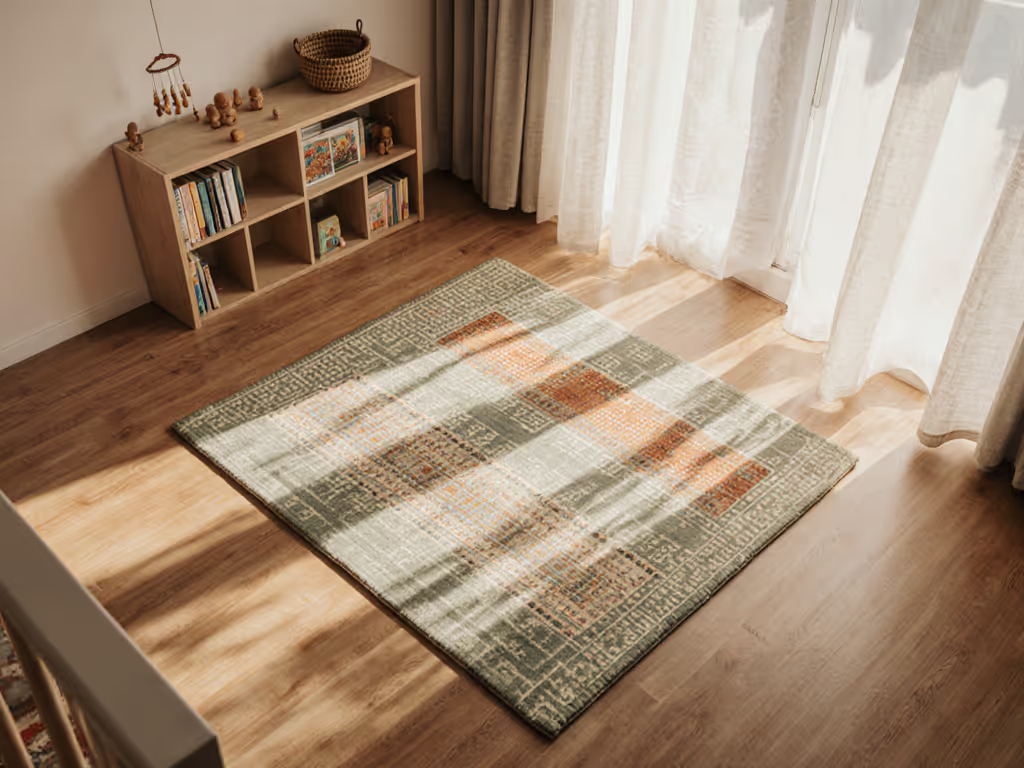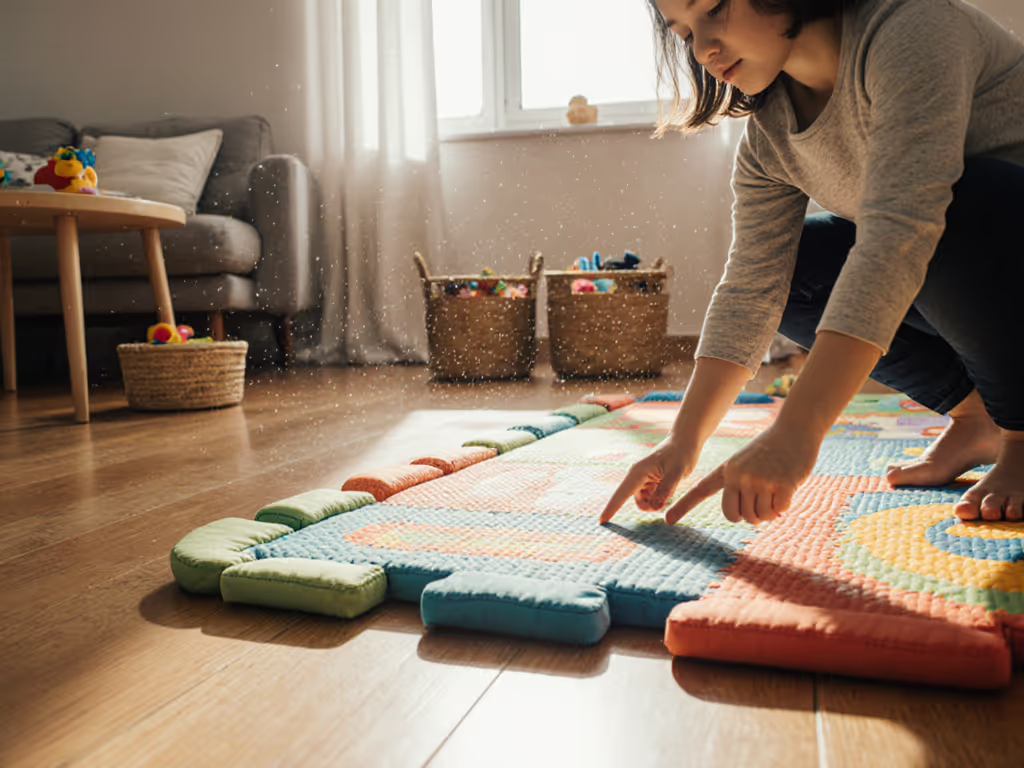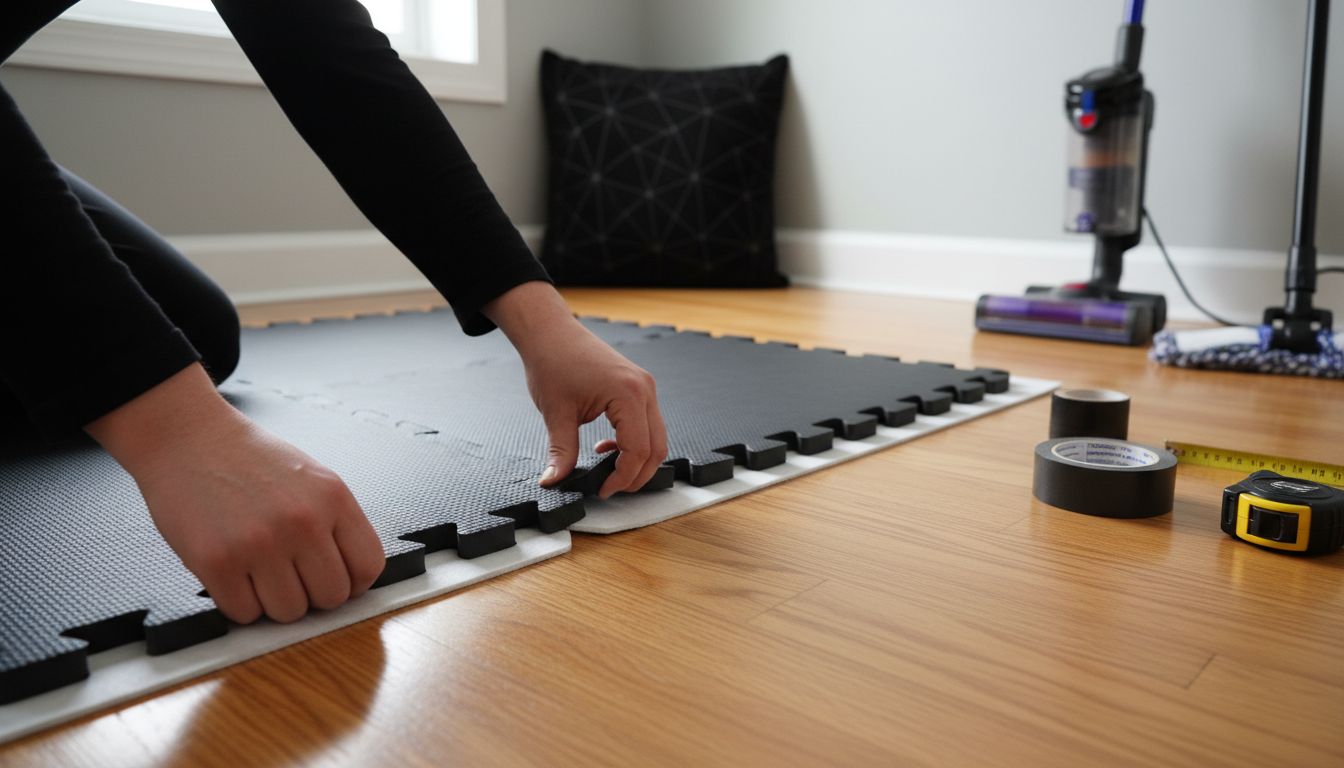
Play Mat Safety Guide: Ensure a Safe Space for Kids

Did you know that over 60 percent of parents worry about hidden toxins in children's play mats? Choosing a safe play space is one of the first ways you protect your child from daily risks at home. With the right steps, you can create a play environment that feels welcoming, comfortable, and truly safe, supporting healthy exploration while minimizing chemical exposure and potential hazards.
Quick Summary
| Key Point | Explanation |
|---|---|
| 1. Choose certified non-toxic mats | Look for safety certifications such as UKCA or CE to ensure low toxicity and safe materials. |
| 2. Prepare the installation area | Clean and inspect the floor thoroughly to avoid potential hazards prior to mat installation. |
| 3. Install without gaps or lifting | Ensure the play mat lies flat and is securely attached to prevent slips and safety risks. |
| 4. Regularly inspect for damage | Conduct monthly checks for wear and tear to maintain a safe play environment. |
| 5. Maintain cleanliness consistently | Regularly clean your play mat according to manufacturer guidelines to prevent dirt and bacteria buildup. |
 |
|
Step 1: Choose Non-Toxic and Certified Play Mats
When selecting a play mat for your little one, you want something safe that won't expose them to harmful chemicals. This section will walk you through identifying non toxic play mat options that protect both your child and your peace of mind.
Start by looking for official safety certifications. In 2025, reputable foam mats are manufactured under strict safety conditions and should carry marks like UKCA or CE which indicate they meet rigorous health standards. These certifications mean the mat has been independently tested for chemical emissions and material safety. When shopping, ask manufacturers directly about their testing protocols and request documentation proving low toxicity levels.
Pay special attention to the materials used in construction. Aim for play mats made from natural or medical grade materials like TPE (thermoplastic elastomer) or pure EVA foam without added harmful plasticizers. Avoid mats with strong chemical odors which can signal the presence of volatile organic compounds (VOCs). A quality play mat should have minimal smell and feel soft yet sturdy when you touch it.
Pro Tip: When in doubt, contact the manufacturer and request a detailed materials safety report. Transparent companies will happily provide this documentation.
By carefully checking certifications and materials, you are creating a safe play environment that supports your child's development without unnecessary chemical risks.
Step 2: Prepare the Area for Safe Installation
Before unrolling your new play mat, you need to create the perfect foundation for a safe and comfortable play space. Proper preparation ensures your child has a clean, secure area that maximizes both safety and fun.
Start by thoroughly cleaning the floor surface where you plan to install the play mat. Sweep or vacuum the area completely to remove any dust, dirt, or small debris that could create an uneven surface or potentially damage the mat. If you have hard flooring like hardwood or tile, use a slightly damp mop to remove any sticky residue or grime. For carpeted areas, run a vacuum with a powerful suction to ensure the surface is completely clean and free of particles.
Next, check the floor for any potential hazards. Look for uneven areas, sharp edges, or protruding objects that could compromise the mat's stability. If you have floor registers, electrical outlets, or other fixtures, make sure the play mat will fully cover these without creating tripping points. Measure the space carefully to confirm your mat will fit perfectly and provide complete coverage for your child's play area.

Pro Tip: Consider using a thin underlayment or carpet tape to help keep the play mat completely flat and prevent any sliding or bunching during active play.
Once your area is clean and prepared, you are ready to create a safe play zone that provides comfort and protection for your little one.
Step 3: Install the Play Mat for Maximum Security
With your play area cleaned and prepped, it is time to install the play mat in a way that guarantees maximum safety and stability for your child. Proper installation is critical to preventing slips, bunching, and potential tripping hazards that could compromise your little one's playtime.
Begin by carefully unrolling the mat across your prepared surface. If the mat comes with interlocking edges, connect them firmly and evenly, ensuring there are no gaps or raised edges that could cause a child to stumble. Press down systematically across the entire surface to eliminate any air bubbles or wrinkles that might create uneven spots. For larger mats, you might need a second person to help manage the unrolling process and ensure a smooth flat placement.
Once the mat is in position, perform a comprehensive safety check. Walk around the entire perimeter and gently press down on each section to confirm complete adhesion to the floor. Test the mat's stability by applying light pressure at different points to make sure it does not slide or shift. Pay special attention to the edges and seams where play mats can sometimes lift or create small ridges that might catch a child's foot.
Pro Tip: If you notice any slight movement or lifting at the edges, consider using carpet tape or thin adhesive strips designed for floor mats to secure the perimeter and prevent sliding during active play.
With careful installation complete, you have created a safe play environment that provides cushioning protection and a stable surface for your child's exploration and movement.
Step 4: Check for Hazards and Secure Edges
After installing your play mat, a thorough safety inspection is crucial to ensure a secure environment for your child. Your goal is to identify and eliminate any potential risks that could turn playtime into an unexpected accident.
Begin with a comprehensive visual and physical examination of the entire mat surface. Look for any signs of wear such as tears, holes, or areas where the mat might be lifting or curling at the edges. According to safety experts, mats should always lie completely flat and be free from damage. Run your hands across the surface to feel for any uneven spots or loose sections that could create tripping hazards. Pay special attention to the seams and connection points between mat sections, as these are often the first areas to show signs of potential weakness.
Next, perform a stability test by gently applying pressure across different areas of the mat. Press down firmly around the edges and center to confirm the mat remains securely anchored to the floor. If you notice any sections that move or lift when touched, take immediate action. For tiles or interlocking mats, ensure each piece is tightly connected without gaps. Some play mats might benefit from additional securing methods like carpet tape or adhesive strips to prevent sliding or separation during active play.
Pro Tip: Conduct a monthly inspection of your play mat. Regular maintenance can help you catch potential issues early and replace the mat before it becomes a safety risk.
By taking the time to carefully check and secure your play mat, you are creating a safe space where your child can explore and play with confidence.
Step 5: Maintain Cleanliness and Inspect Regularly
Keeping your play mat clean and well maintained is essential for creating a safe and healthy environment for your child. Regular maintenance not only extends the life of your play mat but also prevents potential health risks from dirt, bacteria, and wear.
Establish a consistent cleaning routine that matches the manufacturer recommendations for your specific mat material. For foam play mats, use a mild soap solution and a soft cloth to wipe down the surface gently. Avoid saturating the mat with water which can damage the material or create conditions for mold growth. According to childcare safety experts, it is important to air out new mats and be cautious of any strong chemical odors. Perform a quick surface clean after messy play sessions and a more thorough deep clean every few weeks depending on usage intensity.
Beyond cleaning, conduct monthly comprehensive inspections of your play mat. Check the entire surface for signs of wear such as tears, thinning areas, or places where the mat might be separating. Pay special attention to the underside of the mat to minimize potential slippage and ensure the surface remains secure. Look for any embedded objects or debris that might have worked their way into the mat material and remove them carefully to maintain a smooth and safe play surface.
Pro Tip: Keep a maintenance log to track cleaning dates and any observations during your monthly inspections. This will help you stay proactive about your play mat's condition.
By dedicating time to regular cleaning and careful inspection, you are creating a consistently safe play environment that supports your child's active exploration and growth.
Create a Truly Safe and Comfortable Play Space
Choosing a non toxic play mat that protects your child from harmful chemicals while offering comfort is vital for any parent. This article highlights key challenges like verifying safety certifications such as UKCA and CE, ensuring proper installation to avoid slips, and regular maintenance to keep the play mat in top condition. These important details show how creating a secure space requires careful attention to materials, flat installation, and ongoing inspection.
At FloorBloom, we share your commitment to safety and quality. Our carefully tested play mats meet rigorous health standards and come with transparent material reports. Designed for real homes and active kids, our mats provide a soft, stable surface for newborn rolls and toddler cartwheels alike. Don't wait to give your family peace of mind and a beautiful play area that lasts. Explore our selection today and take the first step toward a safer home by visiting FloorBloom.
Frequently Asked Questions
What materials should I look for in a safe play mat?
To ensure safety, choose play mats made from non-toxic materials like TPE or pure EVA foam without harmful plasticizers. Verify that the mat has low chemical emissions by checking for safety certifications like UKCA or CE, indicating it meets strict health standards.
How can I prepare the area for installing a play mat?
Start by thoroughly cleaning the floor where you’ll place the play mat. Remove any dust, dirt, or debris, and check for hazards such as sharp edges or uneven surfaces to ensure a safe, stable foundation for the mat.
What steps should I take to properly install the play mat?
Unroll the mat across the prepared area, ensuring any interlocking pieces fit snugly without gaps. Press down firmly on the entire surface to eliminate air bubbles and wrinkles, and perform a safety check by ensuring it remains stable and aligned after installation.
How do I ensure the edges of the play mat are secure?
After installation, check for any lifting or curling at the edges of the mat. If you find any sections that move when touched, use carpet tape or adhesive strips to secure the perimeter, preventing slipping during play.
What maintenance should I do to keep the play mat clean and safe?
Establish a routine cleaning schedule by wiping the mat with a mild soap solution and a soft cloth to remove dirt and bacteria. Additionally, perform a thorough inspection every month to identify wear or potential hazards, ensuring a consistently safe play area.
How often should I inspect the play mat for safety hazards?
Conduct a comprehensive inspection of the play mat at least once a month. Look for signs of wear like tears or lifting, and address any issues immediately to maintain a safe play environment for your child.
Related Articles


What Is a Foldable Play Mat? Complete Guide

Role of Play Mats: Complete Guide for Safe Play Spaces

Play Mat Safety Standards Explained: Essential Guide

